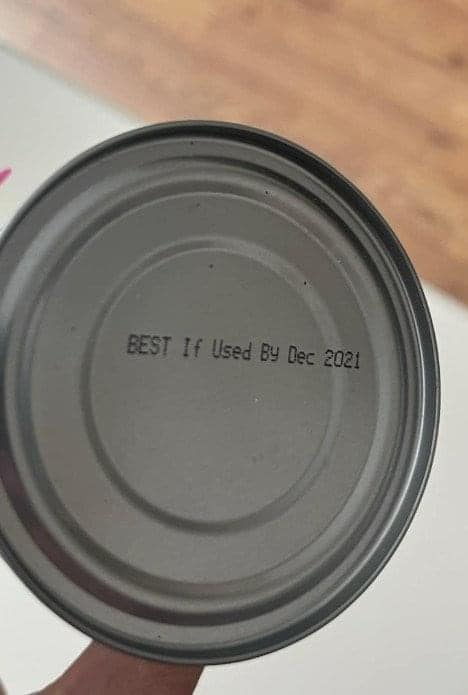Ever wonder if that expired carton of milk or package of chicken is actually unsafe to eat? Many of us see expiration dates and immediately assume it’s time to throw food out. But according to the United States Department of Agriculture (USDA), food expiration dates are more about quality than strict safety deadlines. Let’s break down what these labels really mean and how they can help you reduce waste while staying safe.

Decoding Food Date Labels
Food labels like “Best if Used By,” “Use By,” and “Sell By” are common, but they’re often misunderstood. These terms aren’t usually indicators of food safety but rather guidelines for when the food will be at its best in terms of flavor and quality. Here’s a closer look at each term:
- “Best if Used By”: This date is meant to let you know when the food will have its best taste and quality. It’s not a safety deadline, so even if the date has passed, the product may still be perfectly safe to consume.
- “Use By”: The “Use By” date is the last recommended day to enjoy the product at its peak quality. This doesn’t necessarily mean the food is unsafe afterward—it just might not taste as fresh or have the same texture.
- “Sell By”: This label is directed at retailers, telling them how long to keep the product on display. It’s more about stock rotation than safety, so items with this date can often be safely consumed well beyond it, as long as they’ve been stored properly.
Understanding these dates can help you make better decisions about your food and reduce unnecessary waste. Most expiration dates are not cutoffs for food safety, so using them as quality guidelines rather than strict deadlines can save you money and reduce the amount of food you throw away.
Recognizing Signs of Spoiled Food
Even though many foods remain safe past their labeled date, it’s essential to watch for signs of spoilage to ensure you’re eating fresh food. Your senses—sight, smell, touch, and taste—can often give you a clearer answer than any date on a package. Here’s what to look for:
- Sight: If you see mold, discoloration, or any odd spots, especially on items like bread, cheese, or produce, it’s a sure sign the food has spoiled. For meats, if you notice a gray or greenish color, that’s another indicator it’s time to throw it out.
- Smell: A strange or sour odor is usually a sign of spoilage. For instance, if milk smells off or fish has a particularly strong, unpleasant odor, it’s best to discard them.
- Texture: Some foods develop a slimy or sticky feel when they’re no longer fresh. If chicken feels slimy or if your vegetables are unusually mushy, it’s a good idea to toss them.
- Taste: When in doubt, try a small taste—especially if the food doesn’t show visible signs of spoilage. If it tastes off, it’s best not to eat it.
Using your senses to check for freshness is often more reliable than strictly following the date on the label. This approach helps reduce food waste by allowing you to keep items that are still good while ensuring you’re only discarding what’s actually spoiled.
Storing Food Properly to Extend Freshness
Storing food the right way is one of the most effective strategies for extending its life and preventing waste. Keeping your refrigerator and freezer at the proper temperatures is essential for maintaining food quality. For optimal preservation, your fridge should be set below 40°F (4°C) and your freezer at 0°F (-18°C).
Here are a few storage tips to help your food stay fresh for as long as possible:
- Use airtight containers: Keeping food in airtight containers helps reduce exposure to air and moisture, which can cause spoilage. This is especially useful for items like leftovers, fruits, and vegetables.
- Organize by date: Place foods with shorter “use by” dates at the front of your fridge, so they’re more visible. This way, you’re more likely to use them before they go bad, preventing waste.
- Freeze items you won’t use right away: Freezing foods like meat, bread, and even some fruits and vegetables can extend their life significantly. This is a great way to save foods that you don’t expect to use before they hit their “use by” date.
- Label leftovers with dates: If you’re storing leftovers, writing the date on the container can help you keep track of how long they’ve been in the fridge, so you know when it’s time to use them.
Following these storage practices can maximize the life of your food, helping you reduce waste while keeping your meals fresh.
Why Expiration Dates Are About Quality, Not Safety
Many people mistakenly believe that food expiration dates indicate when food becomes unsafe. In reality, these dates are more about peak quality. By understanding what terms like “Best if Used By” and “Sell By” mean, you can make better choices about when to use or discard food. Pair this knowledge with good storage habits and a reliance on your senses, and you’ll be able to enjoy your groceries longer while reducing waste.
Food often remains safe to eat after its expiration date, so taking a moment to check for signs of spoilage before throwing it out can save you money and help the environment. Before automatically discarding a carton of milk because it’s a day past its date, give it a quick smell or taste—it might still be perfectly fine to use.
Key Takeaways
Understanding food expiration dates is essential for reducing waste, saving money, and getting the most out of your groceries. While these dates serve as quality guidelines, they’re not usually hard safety deadlines. By knowing what these labels mean, storing your food properly, and trusting your senses, you can enjoy fresher meals and waste less food.
Next time you’re unsure about an item that’s close to or just past its date, remember that it might still be good. Take a moment to check it, using your senses to assess its freshness. This habit can make a big difference, not only in your grocery budget but also in reducing the environmental impact of food waste. By understanding food quality, safety, and smart storage, you can make your kitchen both efficient and eco-friendly.





